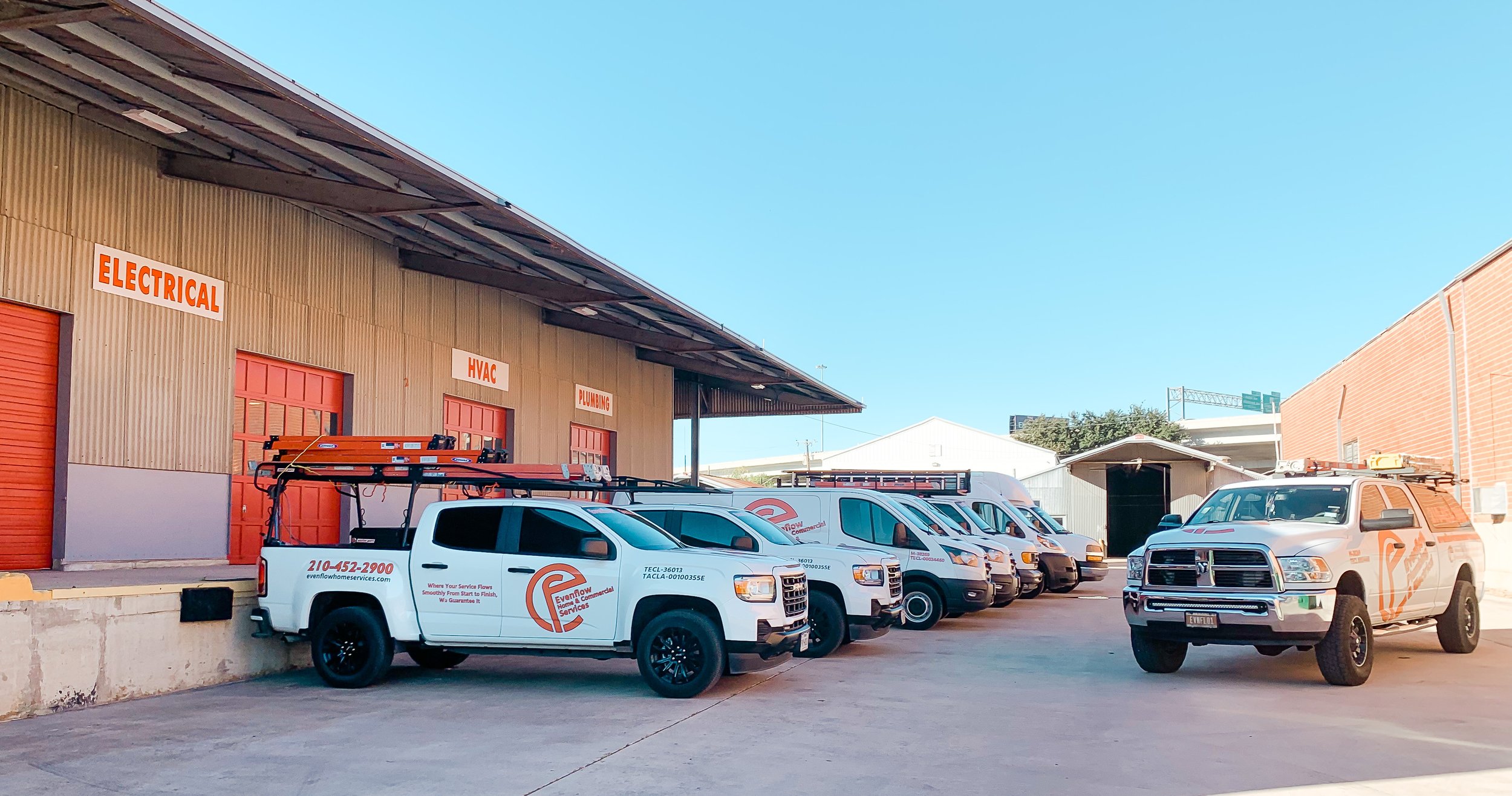
HVAC Replacement in San Antonio, Schertz, Converse, Floresville, Elmendorf, New Braunfels, and Surrounding Cities
SPECIAL OFFERS
Few people can imagine a home or building without a well-functioning HVAC system. HVAC units maintain preferred temperature levels indoors and ensure that the air is free from smoke, pollen, and other pollutants.
Although modern units provide years of reliable service, they eventually succumb to wear and tear. The following symptoms will alert homeowners of the need to invest in a new HVAC unit:
The system is more than ten years old: Most components start to deteriorate after the ten-year mark. Older systems may use R-22, commonly known as Freon, which is highly toxic. With a new unit, homeowners can protect the health of the household members and lower the family’s carbon footprint.
The utility bills keep rising: Energy costs vary depending on the season, but the overall costs should be similar each year. Significant fluctuations typically mean the system can no longer meet the home’s heating and cooling demands. Purchasing a replacement is more cost-effective when repairs fail to optimize the unit’s efficiency. While some fear higher upfront costs, a new HVAC system, which can lower utility bills by 20%, will pay for itself.
Uncomfortable indoor temperatures: Old systems have trouble maintaining consistent indoor temperatures. There may be maintenance issues like cracked ducts, a damaged thermostat, or clogged filters. But more often than not, inconsistent temperatures are a telltale sign the AC system has lost its efficiency.
There’s more dust in the home: The HVAC system is responsible for heating and cooling indoor air and proper ventilation. Ideally, the unit is a well-oiled machine that improves indoor air quality (IAQ). Homeowners who notice more dust in the living areas should contact a qualified technician as soon as possible. They’ll assess the situation and determine whether it’s necessary to replace the unit.
Odd sounds and unusual smells: Odd smells don’t always mean there’s trouble with the HVAC system. At times, the unit is simply burning dust buildup. But if the smell persists, homeowners may be dealing with a severe problem like mold inside the ducts or melted wiring. In such cases, deactivate the system and immediately reach out to a reputable service provider. Also, well-maintained systems are relatively quiet. Grinding and squealing noises indicate that it’s time for an inspection.
HVAC Replacement Cost in San Antonio
San Antonio residents should expect to spend between $4,900 and $9,450 on a new HVAC system. Note that new HVAC system costs depend on the manufacturer, the size of the property, and installation charges.
For example, residents living in a single-level home with two bedrooms will pay less than those living in a three-story, five-bedroom home. As the estimate suggests, new HVAC units have high upfront costs. But their reliability and efficiency justify the steep price point.
Reasons to Should Replace an HVAC System
Homeowners who notice the following issues should contact a professional who will run a diagnostic test
Plummeting energy usage: Compare this year’s energy bills to previous years. If there’s a significant difference, it’s time to consider replacing the HVAC system.
Humidity problems: Is the home too humid during spring and summer and too dry during fall and winter? Then the ductwork could be the culprit. While some believe they can take a DIY approach, it’s best to leave this task to the professionals.
Frequent repairs: If the system requires multiple repairs every few months, it makes more sense to invest in a new unit.
REVIEWS

Cities We Serve
San Antonio, Lakehills, Vernia, Mico, Castroville, Stockdale, New Braunfels, D'Hanis, Marion, Floresville, Bulverde, Shavano Park, Leon Valley, Castle Hills, Schertz, Selma, Boerne, Fair Oaks Ranch, Live Oak, Adkins, Lytle, Saint Hedwig, Terrell Hills, Converse, Elmendor, Pipe Creek, Rio Medina, Natalia, Devine, Atascosa, Somerset, Von Ormy, Macdona, Poteet, Leming, Sandy Oaks, Saspamco, Helotes, St Hedwig, Sutherland Springs, La Vernia, New Berlin, McQueeney, Timberwood Park, Garden Ridge, Bracken, Balcones Heights, Santa Clara, Hollywood Park, Alamo Heights, Kirby and Surrounding Areas
San Antonio Neighborhoods We Serve
Government Hill, Southtown, Lavaca, Monte Vista, Five Points, North San Antonio Hills, Eastside Promise Neighborhood, Tobin Hill, Mahncke Park, Oak Hills, Midtown, East Side, Woodlawn Lake, Alta Vista, Dominion, Uptown, Northern Hills, Hills and Dales, Dignowity Hill, Villa De San Antonio, Valencia, Northern Heights, Central Los Angeles Heights, The Heights at Stone Oak, Spring Creek, North Central Thousand Oaks, Denver Heights, King William, Lackland Terrace, Santa Fe Trails, Valley High North, Avenida Guadalupe, Vista Del Norte, Eden, Inner West Side, Memorial Heights, Gardendale, Inspiration Hills, Northhampton, Los Jardines, Highland Park, Edgewood, Northchase, Ridgehaven, Woodlake, Dellview, North Castle Hills, Oakland Estates, Elm Creek, Village at Big Country, McCreless Meadows, Rainbow Hills, Harvard Palace / Eastlawn, Hunters Mill, Towne Lake, Park Forest, Shearer Hill / Ridgeview, Greater Gardendale, Cable Westwood, Thelka, Loma Park, Skyline Park, Westwood Village, Highland Forest, Redland Woods, Pecan Valley Heights, Oak Haven Heights, Sonoma Ranch, Randolph Hills, Deerfield, Timber Ridge, Mountain View Acres, French Creek, Whisper Hollow, Redland Springs, Knoolcreek, Encino Ranch, Bluffview at Camino Real, Blanco Woods, Encino Park, River Rock Ranch, Misty Oaks, Coolcrest, Eastwood Village, Lorrence Creek, Shavano Gardens, Sunshine Estates, Far West Side, El Chaparral Fertile Valley, Greater Harmony Hills, East Pyron, Brady Gardens, Chrchill Forest, Fairways of Woodlake, Green Spring Valley, Emerald Forest, Oak Meadows, Cavalo Creek Estates, Greystone County Estates, Canyon Creek Village, Valley Forge, Oakmont Downs, Jake Oaks, Trophy Ridge, Pipers Meadow, Dreamhill Estates, Crownhill Park, Woodlawn Hills, Woodland Heights, Thunderbird Hills, Palm Heights


